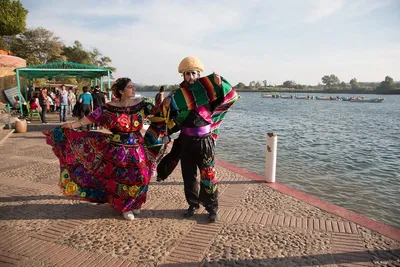
Chiapa De Corzo and Sumidero Canyon: Ultimate Adventure Guide
Chiapa De Corzo and Sumidero Canyon: Your Ultimate Adventure Guide
Welcome to the heart of Chiapas, Mexico, where ancient Mayan culture meets breathtaking natural wonders.
Nestled within this vibrant region lies the picturesque town of Chiapa De Corzo, a gateway to the awe-inspiring Sumidero Canyon.
Embark on an unforgettable journey as we delve into the ultimate adventure guide for exploring these captivating destinations.
From cascading waterfalls to towering cliffs adorned with lush greenery, Chiapa De Corzo and Sumidero Canyon offer a myriad of experiences for adventurers and nature enthusiasts alike.
Whether you seek adrenaline-pumping activities or serene moments of reflection amidst stunning landscapes, this guide promises to unveil the treasures awaiting your discovery. Let’s begin!
Where exactly is Chiapa de Corzo?
Chiapa de Corzo is a town in the central region of the Mexican state of Chiapas.
It has magnificent architectural testimonies of its colonial past, with natural landscapes of unparalleled beauty, beautiful craft traditions, and legends that are a delight to hear from the locals.
These attributes and many others earned it the status of Mexican Magical Town in 2012.
Weather
The town has a sub-humid and warm climate, averaging 24° C.
Seasonal temperature variations in Chiapa de Corzo are minimal, ranging from 22° C in the coldest months (December and January) to 25 – 26° C in the hottest months (April to September).
It rains a little less than 1,000 mm per year, mainly between May and October. Between December and March, it hardly rains at all.
Getting to Chiapa de Corzo
To get from Mexico City to Chiapa de Corzo, you must take a flight to Tuxtla Gutierrez, the state capital.
Unless you want to go by road, it is about 10 hours (850 km) from Mexico City.
Tuxtla Gutierrez is only 15 km from Chiapa de Corzo on Federal Highway 190, also called Panamerican Highway.
History
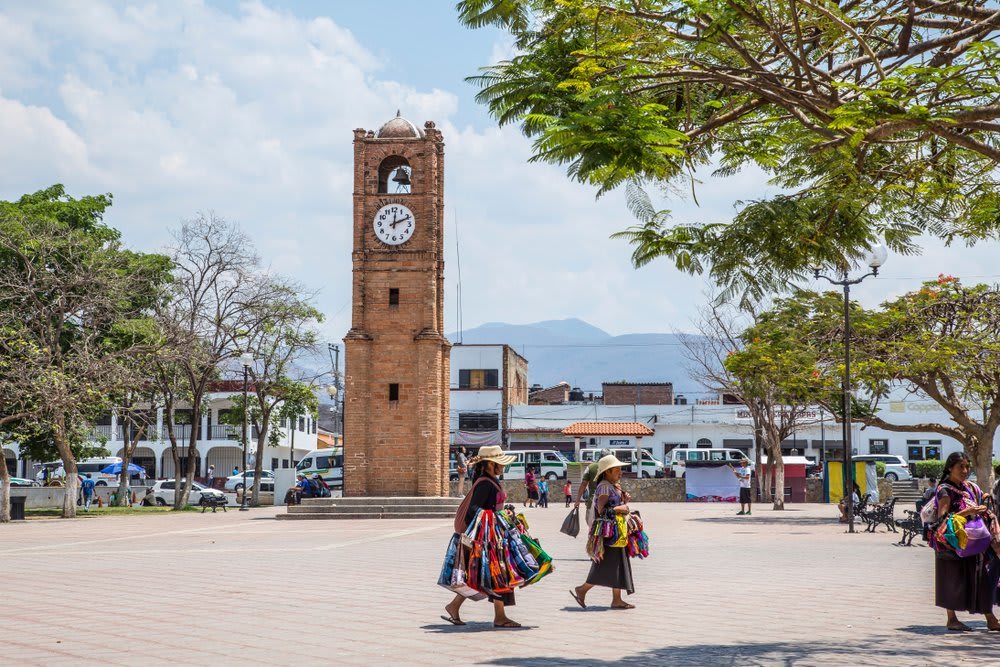
Chiapas means “water that runs under the hill,” and that was the name the Aztecs gave to the Soctón Nandalumí people who inhabited the central region of the current state territory.
These people were almost exterminated by the conqueror Pedro de Alvarado.
During the colony, Chiapa de Corzo was the most important indigenous city of the region, being called “Chiapa of the Indians,” in contrast to San Cristóbal de las Casas, which was the “Chiapa of the Spaniards.”
6 Top places to see in Chiapa de Corzo, Chiapas
The Magical Town has a large number of colonial buildings of incomparable beauty, among which are La Pila, the Temple of Santo Domingo de Guzmán (the Big Church), the Temple of Calvary, the Former Convent of Santo Domingo de Guzmán, and the Ruins of the Temple of San Sebastián.
It is also close to an important archaeological zone, with natural spaces like the Sumidero Canyon National Park and El Cumbujuyú.
It has beautiful handicraft traditions such as lacquer, wood carving, embroidery, pyrotechnics, and jewelry.
1. La Pila
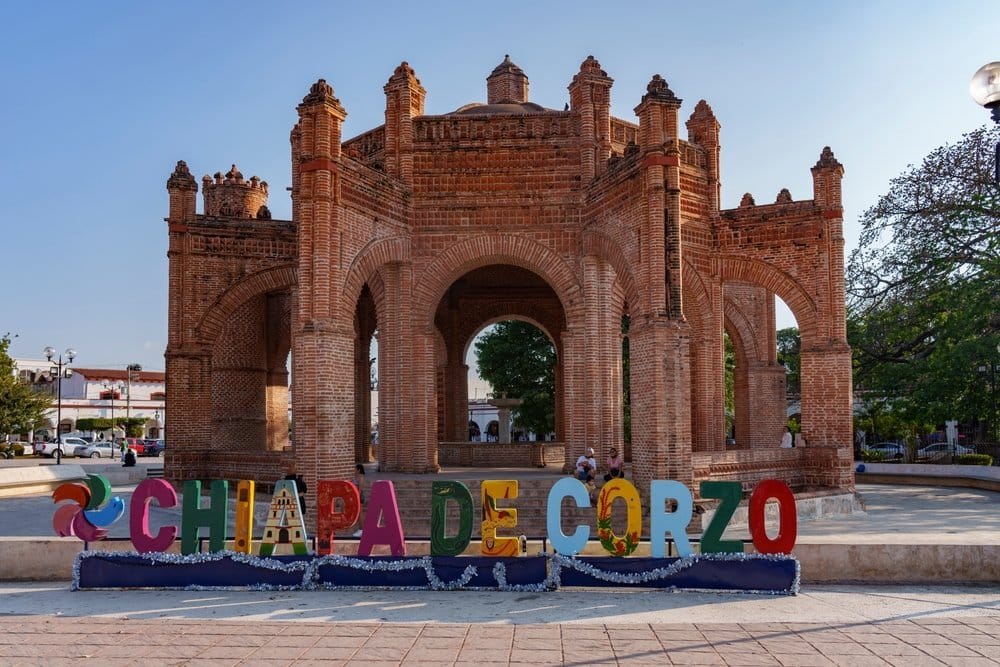
La Pila is the most symbolic monument of Chiapa de Corzo, a majestic fountain of the XVI century, also called La Corona, built in brick and diamond shape.
It is a unique architectural jewel of Hispano-Arabic art in America, a water source for the population, becoming its central meeting place.
Its structure 25 meters in diameter and 15 meters in height combines the octagonal floor plan and the use of brick, characteristic of Islamic art, Gothic structural elements, and a Renaissance dome.
2. Temple of Santo Domingo de Guzmán
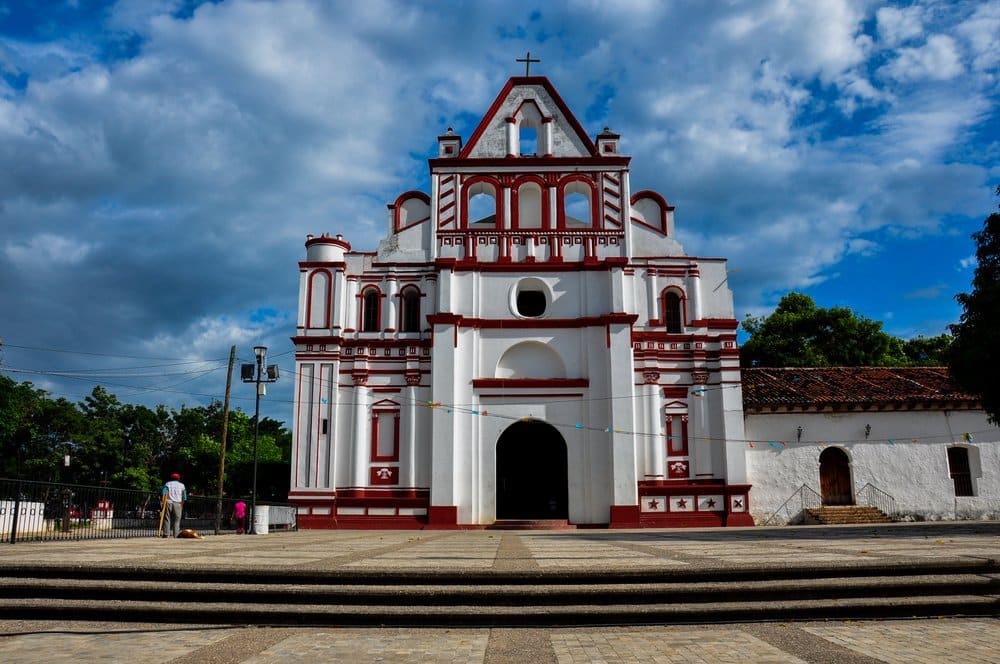
This temple was built in the middle of the XVI century between one of the margins of the Grijalva River and the main square. Also called the Big Church by the Chiapacorceños.
It is the best-preserved religious building in Chiapas among those built in the 1500s and is of Mudejar style, with Gothic, Renaissance, and neoclassical elements.
Its central tower has an enormous bell, one of the largest among the Christian temples of America.
The former Dominican convent in Chiapa de Corzo was built next to the Church of Santo Domingo de Guzman during the 16th century.
In the middle of the 19th century, during the Reform War, the convent was secularized and remained a non-religious building, unlike the church, which kept its ecclesiastical function.
Since 1952, the former convent has housed the Museo de la Laca, exhibiting 450 pieces by national and foreign artists.
3. The Templo del Calvario

This temple is a mixture of warrior and religious history, nothing strange in Mexico’s turbulent past. Due to its strategic location on a hill, it was converted into a fort against the French.
Now tourists go mainly to admire and find relief in its pulpit.
In the Battle of Chiapa de Corzo, the Mexican Republicans inflicted a significant defeat on the imperialists in October 1863, and this temple was one of the main witnesses.
4. Visit the ruins of the Temple of San Sebastian
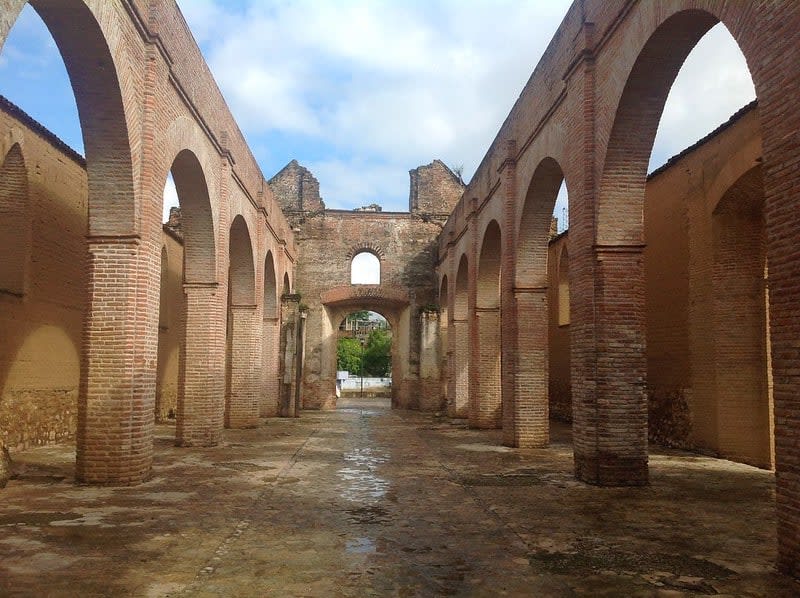
The Temple of San Sebastian, built on the Cerro de San Gregorio in Chiapa de Corzo, remained intact for over two centuries until a strong earthquake almost destroyed it at the end of the XIX century.
A 1993 waterspout completed the destructive work of nature, but the beautiful Mudejar architecture used in its construction can still be seen in the ruins of its main façade and apse.
Due to its excellent geographical position, it was another fortress during the Battle of Chiapa de Corzo.
5. Chiapa de Corzo Museums
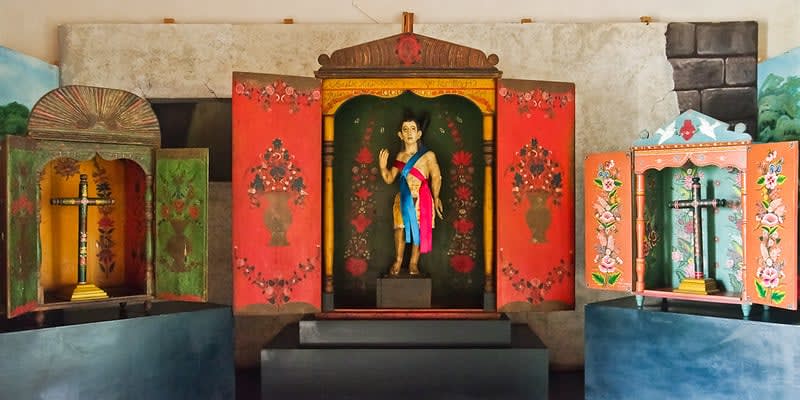
Franco Lázaro Gómez was a multifaceted artist and intellectual from Chiapa de Corzo who distinguished himself in painting, sculpture, drawing, engraving, illustration, and literature. However, he died very prematurely at the age of 28 in 1949.
He died during a scientific and artistic expedition promoted by Diego Rivera and Carlos Chavez through the Lacandon Jungle.
Now Chiapa de Corzo remembers one of its most beloved sons with a museum about his work, located next to the Museo de la Laca in the former convent of Santo Domingo de Guzman.
6. Explore the Archaeological Zone
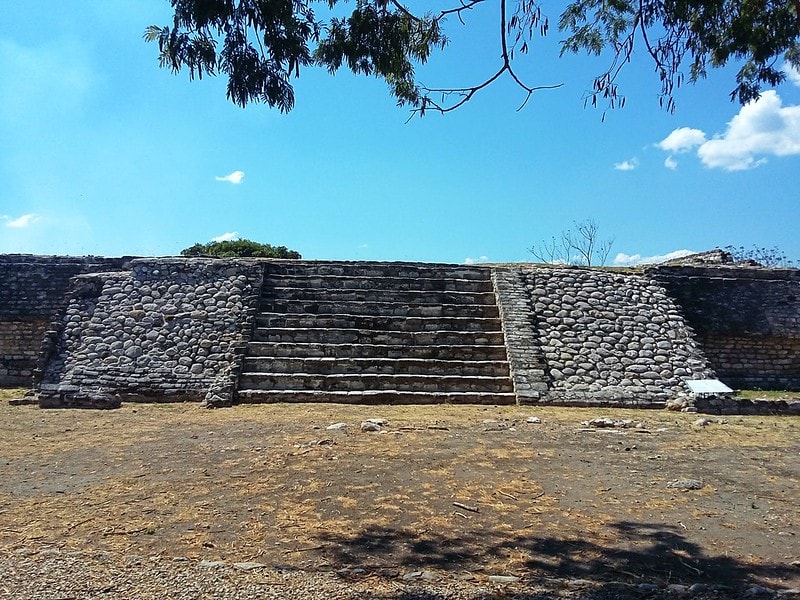
The Archaeological Zone of Chiapa de Corzo, located to the east of the town, is one of the oldest and most important testimonies of the Zoque civilization in Chiapas.
However, it was only conditioned for its full archaeological, cultural, and tourist use five years ago.
In 2010 it contributed a piece of enormous relevance when a 2,700-year-old tomb was discovered, which could be the oldest found so far in all of Mesoamerica.
The central part of the archaeological site is formed by an almost square plaza around which the main buildings are arranged.
The archaeological site is equipped with restrooms and other services.
It has constructions and ruins dating from 850 B.C. to 550 A.D., offering evidence of the Middle Preclassic, Late Preclassic, and Early Classic periods.
Its ruins have made it possible to establish how the temples built on the site were formed, and human remains have also been found with offerings in the tombs.
Sumidero Canyon National Park
The spectacular Sumidero Canyon is the leading natural attraction in this Magical Town because although it is closer to Tuxtla Gutierrez, it belongs to the municipality of Chiapa de Corzo.
The gigantic gorge with the Grijalva River running in the background has depths of more than 1,300 meters. It is an ascending or descending sample of the different types of habitats of Chiapas.
High above, birds of prey glide among the alpine vegetation, while below, crocodiles prowl open-mouthed in search of butterflies and other more succulent prey.
Hot springs and waterfalls
In the small town of Narciso Mendoza, near the municipal capital of Chiapa de Corzo, on the road to La Concordia, is El Cumbujuyú, a small hot springs site.
It sprang naturally and was already known during the colony.
According to some legends in the town of Narciso Mendoza, an aristocrat named María de Angulo had it well taken care of because the warm waters supposedly cured her son of paralysis.
In the Sumidero Canyon is the beautiful waterfall El Chorreadero, with a nearby cave.
Chiapa de Corzo’s Fiesta Grande
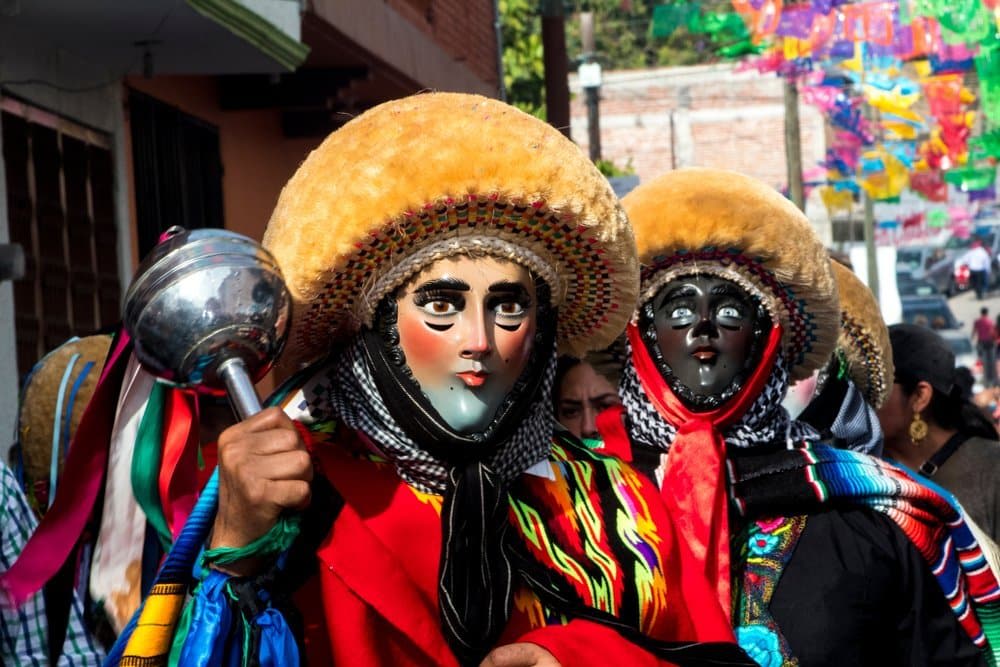
Chiapa de Corzo is decked out for its Fiesta de Enero, a triple celebration that pays homage to San Sebastian, the Lord of Esquipulas, and San Antonio Abad.
It takes place during the week of January 20, Saint Sebastian’s Day.
The festival is led by Los Parachicos, famous dancers in colorful costumes that in 2009 were declared Intangible Cultural Heritage of Humanity by the U.N.
The Parachicos go with masks and rattles, walking through the town with the crowd behind them.
The various Chiapacorceña handicrafts are exhibited during the Fiesta Grande, and its rich gastronomy is offered.
Other festivals
Chiapa de Corzo spends almost the whole year in celebration.
Apart from the Fiesta Grande, each neighborhood has its particular festival; they celebrate the Fiesta de la Marimba, Parachicos festivals, the Festival de Tambor y Carrizo, the festivity of Santo Domingo de Guzman, and the anniversaries of important events.
Another important festivity is Corpus Christi when the Danza del Calalá is performed.
High diving competitions are held in the Sumidero Canyon, and symbolic astronomical days, such as solstices and equinoxes, are celebrated in the archeological zone.
Chiapa de Corzo’s music and handicrafts
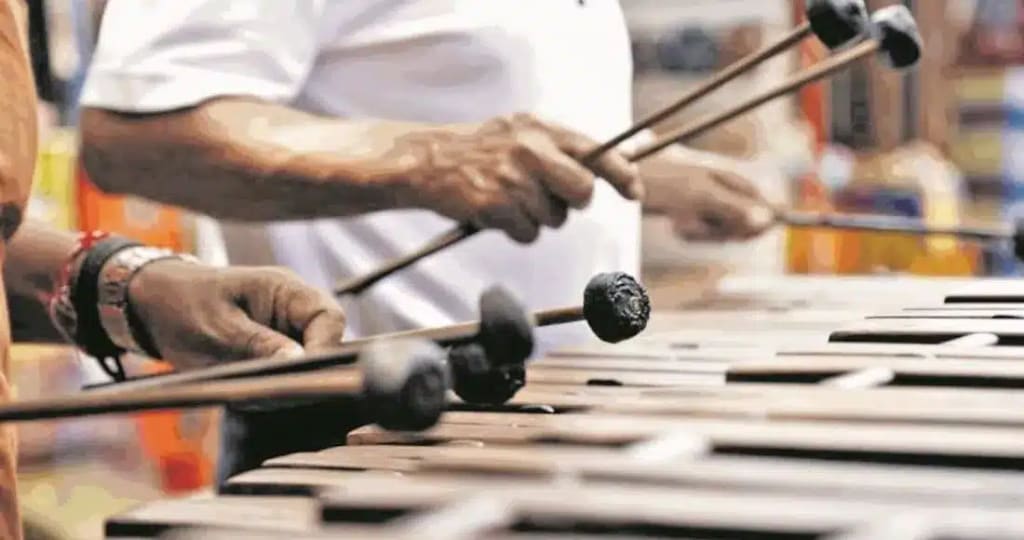
The musical traditions of the Magical Town are headed by the Zapateados de Chiapa de Corzo, a drum and reed music that is danced by the Parachicos and by all those who participate in the Fiesta Grande.
It is played with pre-Hispanic instruments or modern rattles. Although pre-Columbian, this music has Spanish features contributed by the flamenco, the chacona, the fandanguillo, and the folía.
Other musical manifestations present in Chiapa de Corzo are the traditional band of wind instruments and the marimba orchestra.
The laca tradition
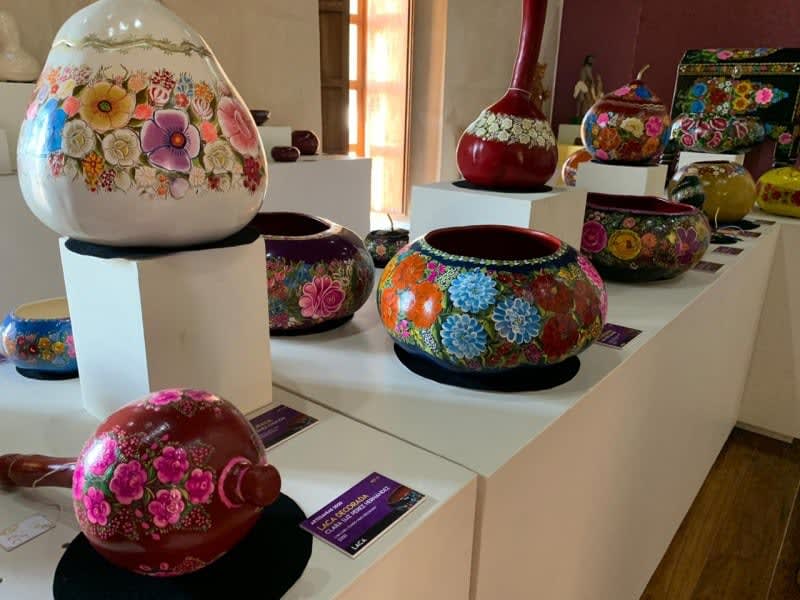
Chiapacorceña lacquer is an artistic tradition of pre-Columbian origin that is now a mestizo art after merging with the techniques and customs brought from Europe by the Spaniards.
The Indians started it to decorate their religious objects and later extended it to all kinds of lacquered pieces, such as jícaras and furniture.
The characteristic features of Chiapas lacquer are the use of the little finger to paint and natural motifs such as flowers and birds in the artistic design.
Wood carving

Wood carving is another popular art masterfully developed by the artisans of Chiapas.
It started as a pre-Hispanic artistic manifestation.
The indigenous people represented the animals for which they felt greater veneration and fear; it continued to be a religious necessity to adorn the Catholic temples with images. Today, it is a beautiful cultural tradition.
The images carved by local artisans are vivid symbols of the being or object represented.
Embroidery
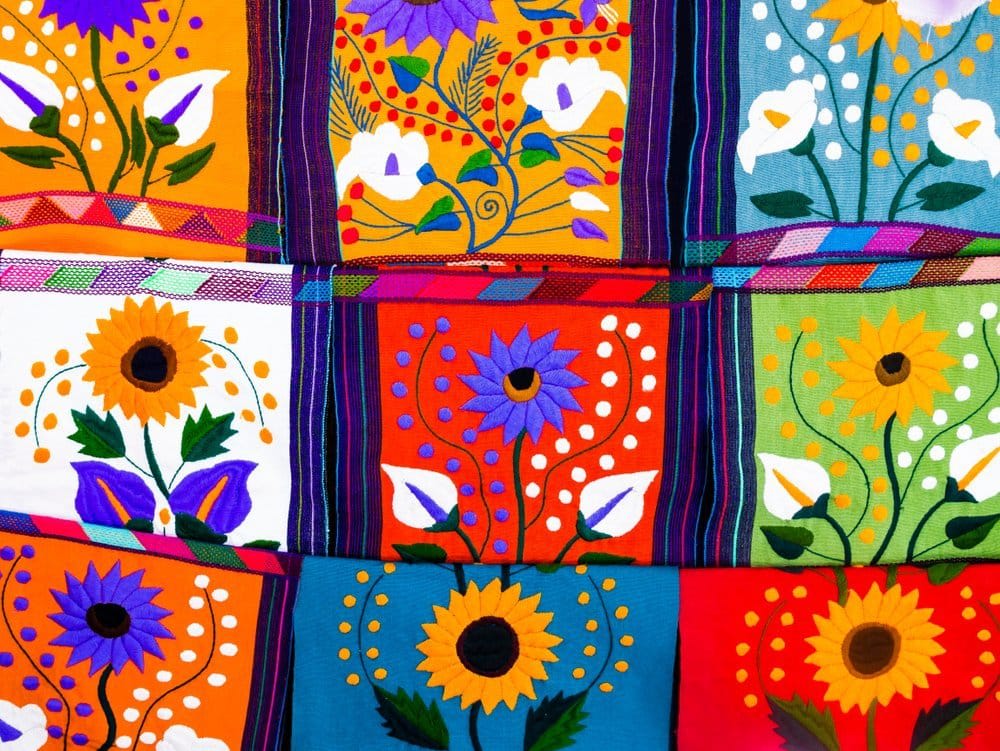
Chiapaneco embroidery is nationally and internationally known for its beauty and fineness.
Chiapa de Corzo is the cradle of the Chiapaneco costume, the typical female dress that symbolizes the women of Chiapas.
The blouse with the neckline and the long skirt is made of satin and is covered with flowers and other motifs embroidered by hand with silk thread.
This technique is applied in other pieces of clothing or everyday use, such as individual blouses, blankets, tablecloths, and rugs, which tourists purchase as precious souvenirs of Chiapa de Corzo.
Jewelry and pyrotechnics
The mining past of Chiapa de Corzo allowed it to develop a tradition of precious metals still maintained by the old jewelers who passed it to the new generations.
These artisans are very skilled in the elaboration of filigree and the setting of the jewelry.
Another artisan activity of the Magical Town is producing pyrotechnic games, which they use abundantly in their celebrations.
Gastronomy in Chiapa de Corzo
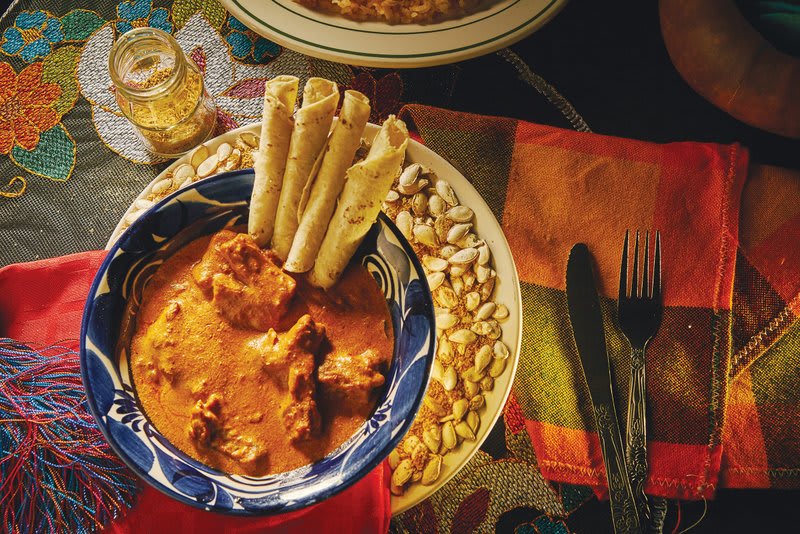
Pepita con Tasajo is the main dish in Chiapa de Corzo. Especially during important celebrations.
The main ingredients of this succulent and thick broth are strips of tasajo (dried meat) and pumpkin seeds.
Another local delicacy is the Puerco con Arroz (pork and rice), which is only surpassed in importance in the Fiesta Grande by the Pepita con Tasajo.
It is customary to eat the Puerco con Arroz on January 17, and is the ceremonial meal of the Parachicos. Other local delicacies are the chipilín con bolitas and the chanfaina.
Chiapa de Corzo lodging
- Hotel La Ceiba, on Avenida Domingo Ruiz 300, has beautiful gardens and spacious rooms, including quintuple rooms
- The Hotel Los Angeles, located at Julian Grajales 2, is used by those who like to leave early for the Sumidero Canyon
- Hotel de Santiago, on Avenida Capitan Vicente Lopez, is a simple lodging located near one of the piers to go to the canyon on the Grijalva River
Tuxtla Gutierrez’s hotel capacity is widely used by tourists visiting Chiapa de Corzo.
The City Express Junior Tuxtla Gutierrez, Hotel R.S. Suites, Hotel Plaza, and Hotel Makarios are good choices in the capital of Chiapas.
Where to eat?
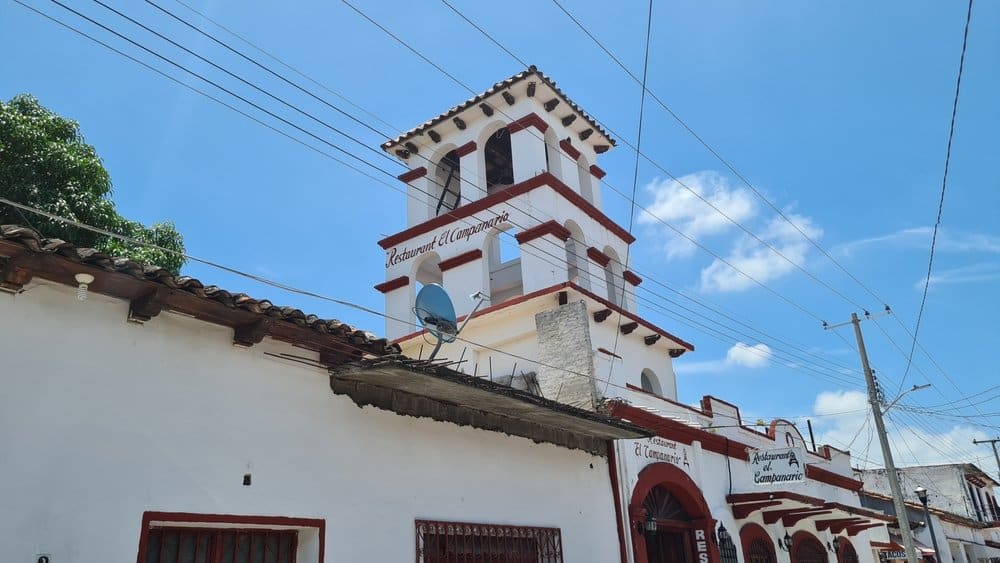
- Jardines de Chiapa Restaurant, on Avenida Francisco Madero 395, offers regional food with excellent seasoning
- Los Sabores de San Jacinto, on Calle 5 de Febrero 143, is praised for its picturesque style and their Chiapaneca food
- El Campanario, one block from the plaza, features marimba music
More options near Chiapa de Corzo are on the access road to the town from Tuxtla Gutierrez and in the Chiapanecan capital itself.
I hope you can find time for all the attractions that Chiapa de Corzo offers; if not, you will have to schedule more trips! Enjoy!